While there's still no official word on which PC manufacturers will produce a Ubuntu touch netbook, the company released a sneak-peak video that shows it's new Netbook Edition Unity interface and gesture library in action. Ubuntu has so far certified a list of 27 laptops and 7 netbooks that work with its full-fledged recent 10.10 release, but has certified none yet for its Unity interface with a touch screen. However, one of those stamped-for-approval netbooks is Dell's Latitude 2100, which includes a touchscreen.
Read More ...
Adobe Warns Of Bug In Shockwave Player
There's a critical bug in Adobe's Shockwave Player that affects both Windows and Macintosh PCs. The bug was publicly disclosed earlier this week. According to Adobe, the bug "could cause a crash and potentially allow an attacker to take control of the affected system." In the security advisory, Adobe said that it considers the issue critical and is working on a patch. The company hasn't disclosed any details as to when the patch will be available. So far, there are no known reports of attacks that have taken
Read More ...
Asus Announces Eee PC 1015PN With Ion 2, Atom N550
Asus is the netbook king. Does anyone deny it? The company's Eee PC line has been around for as long as the term "netbook" has been around, and while computer fads come and go, the Eee PC line keeps right on growing. The "Seashell" group has been joined by another member today, with Asus introducing the Eee PC 1015PN as their latest miniature notebook. It's a familiar 10.1" form factor, with other specifications including a 10.1" display, 1024x600 resolution, NVIDIA Ion 2 next-gen graphics, 1GB of memory, a
Read More ...
Google To Test 1Gbps Internet At Stanford's Campus
Earlier in the year, Google made clear that they wanted to get in the business of providing Internet service, not just service search on the Internet. A ton of cities made their case to Google in order to be selected for one of the first rollouts, but Google has still yet to make their decision on that. In fact, an update today provided by the company states that they're hoping to have that community or communities selected by the end of the year. But you won't have to wait that long to start hearing reports
Read More ...
Google Is Negotiating With Television Networks
Networks may be blocking Google TV for now, but it should come as no surprise that Google is quickly working to try to negotiate with television networks in order to gain access to shows. According to Reuters, a source familiar with the matter said Google is actively negotiating with three television networks that have blocked access to their websites on Google TV. As you'll recall, three of the nation's largest TV broadcasters have blocked the Web-based versions of their shows from being viewed through Google's
Read More ...
Texas Instruments Adds Sitara ARM microprocessors
Texas Instruments added two new AM389x Sitara ARM microprocessors to its portfolio. Designed for use in single-board computers, gateways, routers, servers, industrial automation, human machine interfaces (HMIs) and point-of-service data terminals, the new AM3892 and the AM3894 offer PCIExpress Gen2, SATA 2.0, dual Gigabit Ethernet, and dual DDR2/DDR3 interfaces. According to Texas Instruments, the new microprocessors are the industry’s highest-performing, single-core ARM Cortex-A8 with performance at up
Read More ...
FSB question
Hi
Does overclocking the FSB have a knock-on effect with my GPU? I mean - does OCing the FSB effectively OC the GPU clocks too?
If so - is there a tool to correctly report what my GPU clocks are now running at ?
Thanks :)
Read More ...
Adobe Warns Of Bug In Shockwave Player
 There's a critical bug in Adobe's Shockwave Player that affects both Windows and Macintosh PCs. The bug was publicly disclosed earlier this week. According to Adobe, the bug "could cause a crash and potentially allow an attacker to take control of the affected system."
There's a critical bug in Adobe's Shockwave Player that affects both Windows and Macintosh PCs. The bug was publicly disclosed earlier this week. According to Adobe, the bug "could cause a crash and potentially allow an attacker to take control of the affected system."In the security advisory, Adobe said that it considers the issue critical and is working on a patch. The company hasn't disclosed any details as to when the patch will be available. So far, there are no known reports of attacks that have taken advantage of the bug.
"Hundreds of millions of computers with Internet connectivity have Shockwave installed, so, this will obviously be an attractive target for attackers," security vendor Symantec said Thursday in an e-mailed statement to Computer World.
If attacks should become a problem before a patch is released, users can disable Shockwave in their Web browsers to avoid issues.
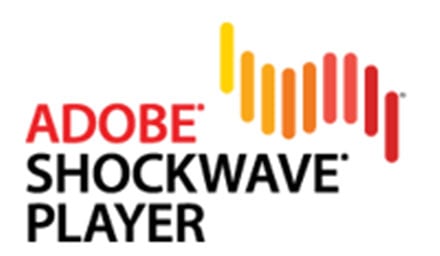
Read More ...
AT&T Sees Tons Of New Activations, 5.2 Million Were iPhones
 There's no question that the iPhone is being challenged more now than ever before. Android activations are on the rise, and Windows Phone 7 is just about here. Plus, Nokia's C8 has put Symbian back on the map. But the iPhone momentum seems as strong ever, despite all of those facts. AT&T just released their Q3 2010 financial numbers, and they look great. Of course, we have to wonder how they'd look without the iPhone exclusive, but that's just conjecture. The reality is that the iPhone is still AT&T's alone, and it's helping the bottom line immensely.
There's no question that the iPhone is being challenged more now than ever before. Android activations are on the rise, and Windows Phone 7 is just about here. Plus, Nokia's C8 has put Symbian back on the map. But the iPhone momentum seems as strong ever, despite all of those facts. AT&T just released their Q3 2010 financial numbers, and they look great. Of course, we have to wonder how they'd look without the iPhone exclusive, but that's just conjecture. The reality is that the iPhone is still AT&T's alone, and it's helping the bottom line immensely.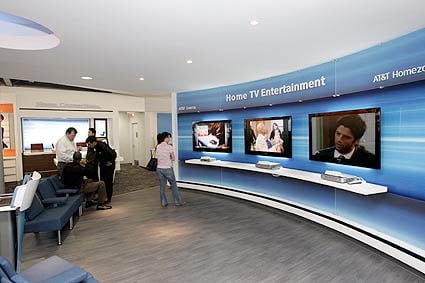
AT&T added nearly 1.6 million emerging device connections this past quarter and passed the 8.5 million total device mark. In the past four quarters, over 4.5 million connected devices have been added to the AT&T network; that sounds great for investors, but given the bandwidth crunch, it's worrisome to existing subscribers who can't seem to find enough of it as-is in larger cities. The total third quarter emerging devices growth, which includes 1.2 million connected devices as well as embedded computing devices, was nearly 1.6 million. Embedded computing devices include tablets, netbooks and laptops, and are included in either the company’s postpaid or prepaid subscriber categories.
Reports have noted that AT&T landed 5.2 million iPhone activations, which represents a 62% gain over the 3.2 million iPhone activations of last quarter. There's a good chance numbers continue to look up in the quarters to come with Windows Phone 7 coming next month, but who knows what next year will hold if that Verizon iPhone ever materializes.

AT&T Adds Nearly 1.6 Million Emerging Device Connections in 3Q; Passes 8.5 Million Total Devices Mark
Emerging Consumer and Business Device Leadership Enables AT&T to Mobilize Everything for Customers: eReaders, Tracking Devices, Photo Frames, Meter Readers and More
Dallas, Texas, October 22, 2010
AT&T*, which offers the nation’s fastest mobile broadband network, announced more than 4.5 million connected devices have been added to the AT&T network in the past four quarters. The total third quarter emerging devices growth, which includes 1.2 million connected devices as well as embedded computing devices, was nearly 1.6 million. Embedded computing devices include tablets, netbooks and laptops, and are included in either the company’s postpaid or prepaid subscriber categories.
The total number of emerging devices, including postpaid and prepaid embedded computing devices, connected to the AT&T network – both for consumers and businesses – now exceeds 8.5 million.
AT&T has certified more than 910 specialty devices that can be used for consumer or business solutions, such as eReaders, netbooks, digital photo frames, personal navigation devices, home security monitoring and smart grid devices – for use on its wireless network.
AT&T’s wireless network enables consumers and business customers access to a range of new, innovative solutions and applications that help make their lives and workplaces more efficient and productive. The AT&T emerging devices portfolio includes consumer electronics devices, rugged handsets and laptops for industrial environments. In addition, AT&T’s machine-to-machine applications enable enterprises and governments to track, monitor, maintain and manage their remote assets to optimize asset utilization and fully mobilize their business processes.
“We remain a top choice for consumer electronics manufacturers, including several who are now running their second generation of connected products on our network,†said Glenn Lurie, president of emerging devices, resale and partnerships, AT&T. “Leading consumer electronics companies, business device manufacturers and start ups choose AT&T because of the advantages we provide:  the nation’s fastest mobile broadband network, the GSM world standard for wireless technology, the nation’s largest Wi-Fi network, flexible business models, and a dedicated device certification lab.â€
AT&T created its emerging devices organization in 2008 and has emerged as the clear industry leader in one of the wireless industry’s fastest growing areas. Recognizing the growing demand for emerging device solutions in the enterprise market, AT&T also formed the Advanced Enterprise Mobility Solutions Group in May 2010. The group delivers advanced mobile applications and solutions for both traditional and emerging devices to businesses, governments and organizations of all sizes.
 “Since we formed our Advanced Enterprise Mobility Solutions group earlier this year, we’ve been collaborating more and more with our Emerging Devices team to deliver to customers a complete mobile experience,†said Michael Antieri, president, advanced enterprise mobility solutions, AT&T Business Solutions. “Our team works to define, deliver and deploy business solutions that help corporations and government agencies wirelessly enable their business applications on virtually any device.â€
Consumer electronics and next generation device manufacturers are encouraged to learn more about AT&T’s emerging devices organization through the dedicated www.att.com/edo Web site.
Consumer electronics and next generation device manufacturers are encouraged to learn more about AT&T’s emerging devices organization through the dedicated Emerging Devices Web site.
The site includes an AT&T Connection Kit, a Device Certification On-Boarding Tool, and information to help prospective business allies determine the right business model, network options, product specifications, and potential customer care and distribution solutions.
Read More ...
Texas Instruments Adds Sitara ARM microprocessors
 Texas Instruments added two new AM389x Sitara ARM microprocessors to its portfolio. Designed for use in single-board computers, gateways, routers, servers, industrial automation, human machine interfaces (HMIs) and point-of-service data terminals, the new AM3892 and the AM3894 offer PCIExpress Gen2, SATA 2.0, dual Gigabit Ethernet, and dual DDR2/DDR3 interfaces. According to Texas Instruments, the new microprocessors are the industry’s highest-performing, single-core ARM Cortex-A8 with performance at up to 1.5 GHz.
Texas Instruments added two new AM389x Sitara ARM microprocessors to its portfolio. Designed for use in single-board computers, gateways, routers, servers, industrial automation, human machine interfaces (HMIs) and point-of-service data terminals, the new AM3892 and the AM3894 offer PCIExpress Gen2, SATA 2.0, dual Gigabit Ethernet, and dual DDR2/DDR3 interfaces. According to Texas Instruments, the new microprocessors are the industry’s highest-performing, single-core ARM Cortex-A8 with performance at up to 1.5 GHz. 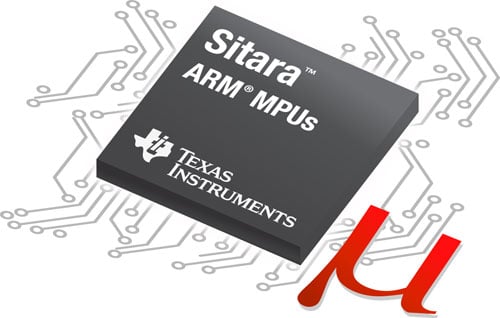
Offering industry’s highest-performing single-core ARM® Cortex™-A8 and extreme system integration, Texas Instruments introduces its newest AM389x Sitara™ ARM microprocessors
Ideal for single-board computing, communications and networking, these 1.5 GHz Sitara ARM MPUs offer customers software compatibility, reduced system cost and software for easy development
DALLAS (Oct. 19, 2010) /PRNewswire/ — Texas Instruments (TI) (NYSE: TXN) expands its portfolio of industry-leading Sitara™ ARM® microprocessors (MPUs) with new AM389x Sitara ARM MPUs that dramatically boost performance and integration. Offering the industry’s highest-performing, single-core ARM Cortex™-A8 with performance at up to 1.5 GHz, the AM389x Sitara ARM MPUs also integrate peripherals that make them perfect for applications such as single-board computers, gateways, routers, servers, industrial automation, human machine interfaces (HMIs) and point-of-service data terminals. These newest high-performance AM389x Sitara ARM MPUs enable faster end products that include network connectivity, graphical user interfaces and display capabilities and the ability to run multiple applications simultaneously for multiple operating systems, such as Linux, Microsoft® Windows® Embedded Compact 7 and Android.Extreme integration for connectivity and cost efficiencies
The two new devices in the AM389x Sitara ARM MPU generation are the AM3892 and the AM3894, both packed with several high-bandwidth integrated peripherals, including PCIExpress Gen2, SATA 2.0, dual Gigabit Ethernet and dual DDR2/DDR3 interfaces. This rich and unique combination of peripherals, optimized for a broad array of applications, allows for quick transmission of data on and off the chip to take advantage of the performance of the ARM Cortex-A8 core within each processor. Because all of these peripherals are integrated on-chip, they save printed circuit board (PCB) space and can reduce bill of materials (BOM) cost while allowing customers to include more features into smaller form-factor end equipment.
Advanced display capabilities and 3D graphics
The AM3892 and AM3894 Sitara ARM MPUs offer an on-chip display engine allowing output of two different streams of content for dual, simultaneous high-resolution displays. This display capability is perfect for applications requiring a seamless graphical, dual-screen experience. For example, HMI applications can use one display for a touch screen keyboard and the other display to view machine performance output. Additionally, the AM3894 Sitara ARM MPU features a 3D graphics accelerator to enable richer graphical user interfaces and an enhanced user experience.
Highly scalable platform protects software investments and expands market opportunities
TI provides its customers with a wide range of devices — from low power to high performance options — including Sitara™ ARM MPUs, Integra™ DSP + ARM processors (also announced today) and DaVinci™ digital media processors. Using these compatible offerings from TI, customers can rapidly develop multiple products with an array of features to address diverse markets while reusing their investments in software across all the products. These compatible Sitara ARM MPUs and Integra DSP + ARM processors share the same peripheral memory maps, bus architecture and ARM Cortex-A8 core, allowing for increased functionality and product robustness while protecting investments and allowing for faster time to market. Additionally, with a broad portfolio of more than 70 product options available today, customers can scale within the Sitara ARM MPU product line from earlier software-compatible AM35x Sitara ARM MPUs to the new highest-performance AM389x Sitara ARM MPUs and to future devices.
Evaluate in minutes; begin development in less than an hour
Both the new Sitara ARM MPUs and the Integra DSP + ARM processors are supported by a single hardware evaluation module (EVM) and a single TI EZ Software Development Kit (EZ SDK), allowing customers to evaluate their devices in minutes and begin development in less than an hour. The Sitara ARM MPUs and Integra DSP + ARM processors also share a common development environment to accelerate time to market and reduce development costs.
AM389x Sitaraâ„¢ ARM MPUs features and benefits:
| Feature | Customer Benefit |
| Performance: 1.5 GHz ARM® Cortex™-A8 core with devices available offering varying performance and power points to optimize power and cost | Offers speed, robust performance and operating system (OS) support (Linux now, Microsoft® Windows® Embedded Compact 7 and Android coming soon) to enable application processing, network connectivity, user interface and system control. This OS support eases development by allowing designers to get started developing quickly and offering designers an OS port from TI |
| Integration: Large set of peripheral options, including two-lane PCIExpress Gen2, two USB 2.0 ports, HDMI TX, SATA 2.0 interfaces for up to two external drives, two 32-bit DDR2/DDR3 external memory interfaces at up to 1.6 GHz, two Gigabit Ethernet MACs (GEMAC) and two-channel video I/O | Provides seamless integration of high performance network connectivity options and peripherals into a single chip, simplifying the sourcing process by reducing the number of required chip suppliers and reducing development time and cost. PCIe enables high-speed connection to computer backplanes and FPGAs Gigabit Ethernet Mac (GEMAC) and USB 2.0 enable customers to add connectivity to new designs SATA allows high speed connectivity to mass storage DDR3 provides larger memory bandwidth, improving multiprogramming and overall system responsiveness and performance |
| Display and 3D graphics: Supports up to two high-quality displays at up to 1920 x 1280 resolution with an SGX530 graphics accelerator up to 333 MHz (AM3894) to render 3D graphics | Enables output of two different streams of content for up to two high-resolution displays simultaneously for applications requiring a seamless graphical multi-screen experience from one processor and allows for hardware accelerated 3D graphics (AM3894) for more complex GUIs |
| Software: TI EZ Software Development Kit supporting AM389x Sitara ARM MPUs and C6A816x Integra DSP + ARM processors | A free software package that allows easy evaluation of device (out-of-box experience) within minutes and development in less than an hour. It shortens development time with a single installation package that includes: development software and example code required to start development, operating systems, drivers for peripherals, connectivity and display, touch screen graphical application launcher, graphic development kit, example graphics and starter code. |
Tools, pricing and availability
Development is made easy, and evaluation can begin in minutes with TI’s comprehensive evaluation modules (EVM) and the free TI EZ SDK available on ti.com. Designers can begin development on the DDR2 version (TMDXEVM8168DDR2) today for $1,895. A DDR3 version with video capture capability is expected to begin shipping in 1Q2011. The TI EZ SDK for Linux is available for download. TI EZ SDK versions for Android and Windows® Embedded Compact 7 will be available in 1Q 2011.
Order entry is open today for the XAM3894CYG Sitara ARM MPU starting at $43.10 in 1,000 unit quantities (1 ku). The new high-performance C6A816x Integra DSP + ARM processors are pin-to-pin compatible with AM389x Sitara ARM MPUs and are also available for order today.
Read More ...
Sharp Reportedly Exits Notebook Business To Focus On Tablets, Smaller Machines
 Now, the notebook world has one less name in the hat, and one less competitor in the field. Sharp has just revealed that the company is planning to scale back their mobile operations, and that means no more notebooks from Sharp. That's a pretty big move for a company with a name like Sharp. Sharp has a huge reputation in the consumer electronics industry, and to just stop producing notebooks altogether is rather impressive.
Now, the notebook world has one less name in the hat, and one less competitor in the field. Sharp has just revealed that the company is planning to scale back their mobile operations, and that means no more notebooks from Sharp. That's a pretty big move for a company with a name like Sharp. Sharp has a huge reputation in the consumer electronics industry, and to just stop producing notebooks altogether is rather impressive.It's a decision that probably wasn't taken lightly, but the competition in the notebook space has definitely heated up in recent years. Moreover, tablets/UMPCs have grown in popularity, and that's where Sharp intends to focus their efforts now. They're shifting focus from full size notebooks to smaller machines, like tablet PCs and mobile terminals. Sharp is also in the process of shifting their business from one that just sells hardware to one that also offers companion content services. Miyuki Nakayama, a Sharp spokeswoman, said it best: "Our intention is to shift from just selling the product to expand to the business model of contents services business in addition to e-book product sales."

Sharp will kick off their new mobile face with the introduction of the Galapagos tablet this December, as that will be their first tablet introductions with Android. They'll come in 5.5" and 10" sizes, and will double as e-reader devices. Reportedly, Sharp is talking with Verizon on a U.S. launch of those two, but nothing has been nailed down yet.
Read More ...
Will video games work on my netbook?
I recently bought a disk drive for my Acer Eee PC with Intel Atom processor. I wanted to buy some games like Orange box to play on it, 1: is windows 7 too new to play a game from like 2000 on? and 2: will my netbook be able to handle the graphics?
Read More ...
A Peek At Ubuntu's New Touch Support
 While there's still no official word on which PC manufacturers will produce a Ubuntu touch netbook, the company released a sneak-peak video that shows it's new Netbook Edition Unity interface and gesture library in action.
While there's still no official word on which PC manufacturers will produce a Ubuntu touch netbook, the company released a sneak-peak video that shows it's new Netbook Edition Unity interface and gesture library in action.Ubuntu has so far certified a list of 27 laptops and 7 netbooks that work with its full-fledged recent 10.10 release, but has certified none yet for its Unity interface with a touch screen. However, one of those stamped-for-approval netbooks is Dell's Latitude 2100, which includes a touchscreen. The rumor is that the Dell Latitude 2100 does pretty well with Unity installed
The demo sure looks like its being done on a Dell Latitude XT2 Tablet PC, perhaps another clue as to which vendor will be first to offer it. The XT2 is not one of the laptops that Ubuntu has certified for use with 10.10.
Read More ...
HDMI 1.3 is 3D Capable After All
When the HDMI 1.4 spec was announced, 3D television and movies seemed to be the most commonly touted advancements. If you want 3D, they said, you need HDMI 1.4. Of course, things got a bit confusing later when the Blu-ray association announced the requirements to view 3D Blu-ray movies and lumped the PS3 in as a compatible player.
Since Sony’s Playstation 3 is a game console that supports HDMI 1.3 – not the seemingly required 1.4 – it seemed that the PS3 was somehow singled out as an exemption. Thanks to some more information from the HDMI Licensing group, we now know that all devices capable of online firmware updates will be able to play 3D movies.
Most, if not all BD-Live capable Blu-ray players will be upgradeable to the new standard. Satellite receivers and cable boxes can be upgraded as well, but in both cases, there’s a catch. To view 3D video in 1080p, your television needs to show two 1080p pictures at a near simultaneous rate, and that’s something that HDMI 1.3 just can’t handle. Essentially, going 3D doubles the amount of information going through the cable.
Simply stated, if you’re watching a Blu-ray movie in 3D with HDMI 1.3, you’ll get a 1080i 3D experience. It’s a bit of a loss, but it’s pretty acceptable as far as sacrifices go. The big hit comes with cable boxes.Since cable boxes send out a 1080i signal, when going 3D you’ll end up with a 540i resolution. The decreased video quality is a pretty big hit, and it’s up to set-top box makers and broadcasters to get it figured out.
http://www.avrev.com/home-theater-news/cables-news/hdmi-1.3-is-3d-capable-after-all.html
Read More ...
Asus Announces Eee PC 1015PN With Ion 2, Atom N550
 Asus is the netbook king. Does anyone deny it? The company's Eee PC line has been around for as long as the term "netbook" has been around, and while computer fads come and go, the Eee PC line keeps right on growing. The "Seashell" group has been joined by another member today, with Asus introducing the Eee PC 1015PN as their latest miniature notebook.
Asus is the netbook king. Does anyone deny it? The company's Eee PC line has been around for as long as the term "netbook" has been around, and while computer fads come and go, the Eee PC line keeps right on growing. The "Seashell" group has been joined by another member today, with Asus introducing the Eee PC 1015PN as their latest miniature notebook.It's a familiar 10.1" form factor, with other specifications including a 10.1" display, 1024x600 resolution, NVIDIA Ion 2 next-gen graphics, 1GB of memory, a 250GB hard drive and Intel's dual-core Atom N550. This is also an Optimus enabled machine, which means that it can switch between discrete graphics and integrated graphics without rebooting in order to save on battery life.
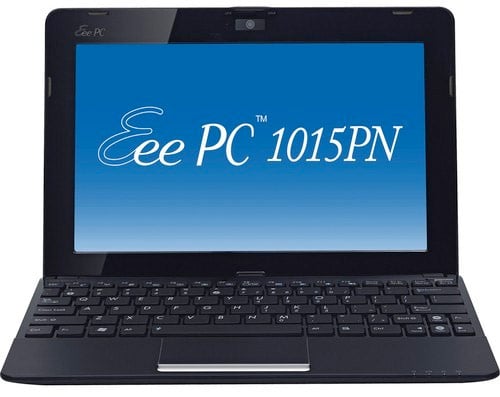
On the subject of battery life, Asus claims that the battery will last around 9.5 hours, but we have noticed in past reviews that these claims tend to be fairly lofty. But even if it only lasted 5-6 hours, that's still rather impressive. Asus also claims that HD video playback should not be a problem, and with a $429 price tag, it's definitely one of the cheaper netbooks to pack this kind of power.
Read More ...
Google To Test 1Gbps Internet At Stanford's Campus
 Earlier in the year, Google made clear that they wanted to get in the business of providing Internet service, not just service search on the Internet. A ton of cities made their case to Google in order to be selected for one of the first rollouts, but Google has still yet to make their decision on that. In fact, an update today provided by the company states that they're hoping to have that community or communities selected by the end of the year.
Earlier in the year, Google made clear that they wanted to get in the business of providing Internet service, not just service search on the Internet. A ton of cities made their case to Google in order to be selected for one of the first rollouts, but Google has still yet to make their decision on that. In fact, an update today provided by the company states that they're hoping to have that community or communities selected by the end of the year.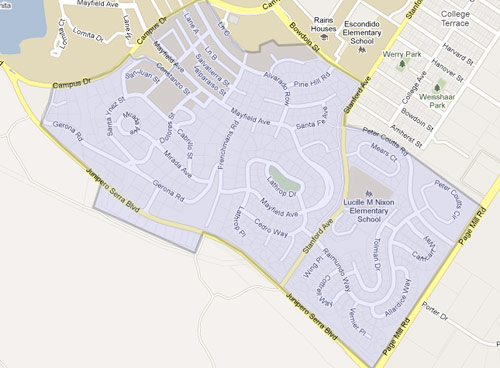
But you won't have to wait that long to start hearing reports about how great (or not so great) Google's fiber-based ISP is. That's because the company has landed a deal with Stanford University that will make it available to the university’s Residential Subdivision, a group of approximately 850 faculty- and staff-owned homes on campus. Through the trial, Google plans to offer Internet at speeds of up to 1Gbps, with plans to start breaking ground early next year.
Google's goal is to build to at least 50,000 and potentially up to 500,000 people, but this trial will help them ensure that they're actually ready to take it outside of beta. Stanford's campus is close to Google's campus, and that was a big part of the choice. Google will be able to receive feedback from just across town and tweak things quickly in order to make improvements.

One small step for man, one giant step for the future of the Internet.
Read More ...
HP Reveals Slate 500 Tablet
 Hewlett-Packard unveiled its first tablet. Known as the Slate 500, this $799 device runs on Microsoft Windows 7 and targets business customers. In contrast to many of today's tablets which traditionally offer a smartphone feel, the Slate 500 attempts to replicate the experience you'd get on a full PC but in a tablet form factor.
Hewlett-Packard unveiled its first tablet. Known as the Slate 500, this $799 device runs on Microsoft Windows 7 and targets business customers. In contrast to many of today's tablets which traditionally offer a smartphone feel, the Slate 500 attempts to replicate the experience you'd get on a full PC but in a tablet form factor. The Slate 500 runs Windows 7, just like your desktop PC. It also has an 8.9-inch, multi-touch-enabled screen with a digital stylus pen and 64GB of storage. The tablet weighs 1.5 pounds and gets approximately five hours of battery life. Also in contrast to other tablets which use low-power ARM-based processors, the Slate uses an Intel Atom processor, much like today's netbooks.
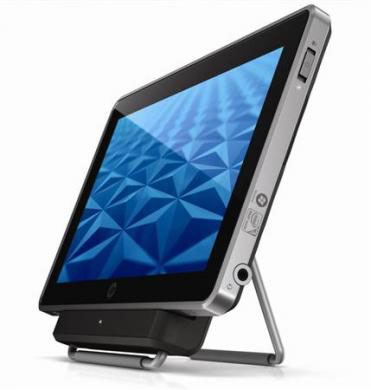
The Slate has front and rear-facing cameras to enable video conferencing as well as a USB port for additional connectivity. The HP Slate 500 is currently available.

Read More ...
Microsoft Plans New PC Game Store
 Microsoft recently introduced a new online PC game store known as Games for Windows Marketplace. The store will officially launch on November 15. According to Microsoft, it will combine the convenience of the web with a "Games on Demand" online distribution model. Through the store, Microsoft plans to offer a "Deal of The Week" as well as other special offers on games. Games for Windows Marketplace will initially launch with 100 titles. Some of the titles will include Fable: The Lost Chapters, Grand Theft Auto III, Lego Universe, Dead Rising 2, and Max Payne. To use the marketplace, you'll need a Windows Live ID. The store will accept Microsoft Points and credit cards.
Microsoft recently introduced a new online PC game store known as Games for Windows Marketplace. The store will officially launch on November 15. According to Microsoft, it will combine the convenience of the web with a "Games on Demand" online distribution model. Through the store, Microsoft plans to offer a "Deal of The Week" as well as other special offers on games. Games for Windows Marketplace will initially launch with 100 titles. Some of the titles will include Fable: The Lost Chapters, Grand Theft Auto III, Lego Universe, Dead Rising 2, and Max Payne. To use the marketplace, you'll need a Windows Live ID. The store will accept Microsoft Points and credit cards. 
Microsoft Brings Games on Demand to the Web With New PC Game Store
New Games for Windows Marketplace makes buying great PC games easier than ever.
REDMOND, Wash., Oct. 22 /PRNewswire/ -- Microsoft Corp. today announced the Games for Windows Marketplace, a new online PC games store that combines the convenience of the Web with the power of Games on Demand online distribution. Launching Nov. 15, the Games for Windows Marketplace will offer PC gamers a robust lineup of games they love, easier navigation and purchase, and recurring specials such as Deal of the Week."With Games for Windows Marketplace, we set out to create a digital store built for PC gamers end-to-end," said Kevin Unangst, senior global director, PC and Mobile Gaming, at Microsoft. "And by integrating with our existing Xbox LIVE and Windows Live services, we've made it easier than ever for millions of gamers to see for themselves how easy buying PC games can be."
A Streamlined Experience
Built from the ground up for convenience and performance, the Games for Windows Marketplace (http://www.gamesforwindows.com) will remove the barriers between gamers and the games they love by offering the following:
- Online access, anywhere. Optimized for speed, the store allows for ultra-fast downloads; this means fewer clicks to purchase and download, delivering faster turnaround for gameplay. And since the service lives on the Web, gamers can download games on a PC, anytime, and can easily redownload games they purchase if needed.
- Deals and discounts galore. Gamers can check out screaming deals on select games every time they visit the Marketplace, as well as the Deal of The Week and other recurring and seasonal offers.
- Game search functionality. Gamers can search by titles or genres to quickly find the games they want; they can even find new games from their favorite publishers with dedicated publisher pages.
- Fresh design. The clean, intuitive look and feel makes browsing for games a simple, enjoyable experience. Gamers can easily navigate between pages as they search for the perfect game.
Games for Windows Marketplace will launch with a managed portfolio of 100 top-quality titles. The launch roster includes blockbuster games such as "Fable: The Lost Chapters" (Microsoft Game Studios) and "Grand Theft Auto III" (Rockstar Games Inc.) from some of the industry's biggest developers, such as Capcom Entertainment Inc., 2K Games, Square Enix Co. Ltd. and more. In addition to top retail games, the portfolio will bring new indie titles to the forefront and continue to grow with many of the best games in the industry including titles such as "Lego Universe" (Warner Bros. Interactive Entertainment) and "CarneyVale" (Microsoft Game Studios), which will hit the Games for Windows Marketplace and retail stores at the same time and date; recent hits such as "Dead Rising 2" and "Lost Planet 2" (both from Capcom); and perennial best-sellers such as "Max Payne" (Rockstar) and "Deus Ex: Game of the Year Edition" (Square Enix).
"We plan to deliver some of our biggest and best PC franchises on Games for Windows Marketplace from day one," said Christian Svensson, corporate officer and vice president of Strategic Planning and Business Development at Capcom. "Digital distribution continues to drive growth in PC gaming, and we're excited to partner with Microsoft and bring amazing games to this growing marketplace."
Games for Windows Marketplace will also be the place to find iconic franchises from Microsoft Game Studios, such as "Flight Simulator," "Gears of War," "Halo" and "Zoo Tycoon," as well as upcoming blockbusters "Fable III," "Age of Empires Online" and "Microsoft Flight."
Easy Access to a Massive Gamer Community
Using the new marketplace is a breeze: anyone with a Windows Live ID (Windows Live, Xbox LIVE, Games for Windows – LIVE or Zune account) can login and immediately start shopping in the Games for Windows Marketplace. The new store also supports Microsoft Points (as well as credit card purchasing), allowing the more than 25 million users of Xbox LIVE, Zune Marketplace and Games for Windows — LIVE to use their Microsoft Points balance seamlessly across platforms.
The new Games for Windows Marketplace launches Nov. 15 at http://www.gamesforwindows.com.
Read More ...
Google Is Negotiating With Television Networks
 Networks may be blocking Google TV for now, but it should come as no surprise that Google is quickly working to try to negotiate with television networks in order to gain access to shows. According to Reuters, a source familiar with the matter said Google is actively negotiating with three television networks that have blocked access to their websites on Google TV.
Networks may be blocking Google TV for now, but it should come as no surprise that Google is quickly working to try to negotiate with television networks in order to gain access to shows. According to Reuters, a source familiar with the matter said Google is actively negotiating with three television networks that have blocked access to their websites on Google TV.As you'll recall, three of the nation's largest TV broadcasters have blocked the Web-based versions of their shows from being viewed through Google's Web TV service. Currently, Walt Disney Co (owners of ABC and ESPN), CBS, and NBC Universal are blocking access from Google TV. Fox has not yet decided whether or not it will block access to its shows.
Given the amount of ad revenue that Google could potentially gain from its TV service, the company certainly has some incentive to work with the television networks. As it currently stands, HBO has said it will offer access to hundreds of hours of its programming to existing subscribers through Google TV. Turner Broadcasting, which includes TBS, TNT, and CNN, has optimized some of its websites for Google TV.

Read More ...


No comments:
Post a Comment